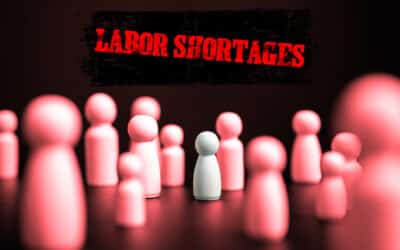Introduction to Demand Forecasting in Retail Employee Management
If you are new to retail, you may hear “demand curve”, “demand forecasting” or “labour demand forecasts” mentioned. In this blog article, we explain what is retail labour demand forecasting and everything you need to know to understand the concepts.
For business owners in the retail industry, understanding and predicting customer demand is essential to success. Demand forecasting involves predicting the quantity of staff that will be needed at any given time to meet customer demand. With the help of workforce management, business owners can use this information to plan and manage their employees more efficiently.

It is probably useful to define some of the regularly used terms in Demand Forecasting.
Demand curve: A graphical representation of the amount of staff needed per role in 15 or 30-minute intervals throughout the day. These predictions are normally by store or by department/ It will show peaks at busy times and troughs during quiet times
Labour demand forecast: A prediction of the number of employees per role necessary to meet customer demand
Demand forecasting: methods to predict future customer demand alongside the number of staff required to serve those customers.
Labour standard: a measurement of how long an employee takes to complete a specific task or activity.
What makes a good demand curve?
A demand curve should be the optimal staffing model for a shop or department by job role.
If a retailer accurately matches employees to a demand curve, their customers will not have to queue during busy periods, and the employer won’t waste money during quiet times by paying staff to stand idle. Retailers use artificial intelligence and other tools to predict their demand curve. Accurate demand curves increasingly rely on fully automated AI systems that can build a fresh AI for every store every week because no two stores or weeks are the same, and only AI can deal with this level of complexity at scale.

What are the Benefits of Demand Forecasting?
The main benefit to businesses in the retail industry is increased revenue generated by ensuring your customers needs are met. The difference between an AI-powered demand forecast and a manager using a spreadsheet can be between 2 and 5% of revenue, which is huge. How does demand forecasting deliver this revenue growth? First, it allows businesses to accurately plan for staffing. When businesses have a clear understanding of customer demand, they are better equipped to schedule employees during peak hours. Additionally, demand forecasting helps them budget more effectively by allowing them to plan for additional inventory and supplies during peak demand.
Workforce Management’s Role in Demand Forecasting
Workforce management software plays a key role in demand forecasting. It can provide business operators with the data they need to make more informed decisions. By utilising labour standards and third-party data, operators can better understand customer demand. Additionally, workforce management can enable business owners to create sales and demand forecasts.
What are the steps in creating a demand forecast?
Demand forecasts are created in a two-step process:
- Creating a Sales Forecast: A sales forecast is a prediction of future sales based on past trends. It is typically based on historical sales data, customer feedback, and industry trends. With the help of workforce management, business owners can use this information to create a sales forecast and plan for staffing accordingly.
- Creating a Demand Forecast: A demand forecast is a prediction of customer demand based on past trends. It is typically based on customer feedback, past sales data, and industry trends. By utilising demand forecasts, business owners can plan for staffing and scheduling more efficiently.
Conclusion
Demand forecasting is an essential part of workforce management in the retail industry. It enables business owners to accurately predict customer demand and plan for staffing more effectively. Additionally, by utilising labour standards and third-party data, business owners can gain insight into customer demand and create a sales and demand forecast. Using modern AI-Powered systems, it is possible to increase revenue by between 2-5% with more accurate demand forecasting.
Related articles:
What are the different methods for Labour Demand Forecasting?
Why do you need Labour Demand Forecasting?
Can Labour Demand Forecasting solve your staff shortages?




